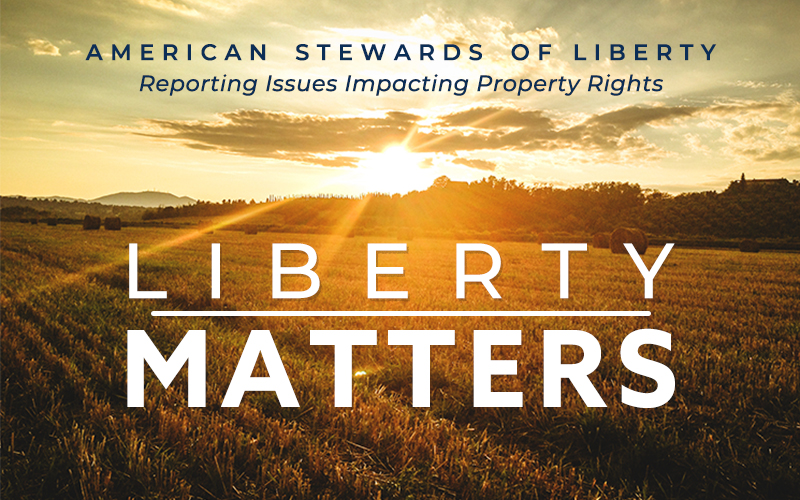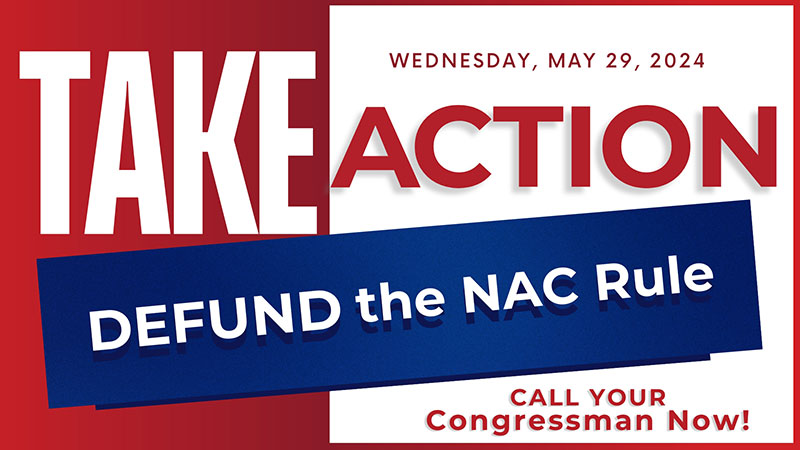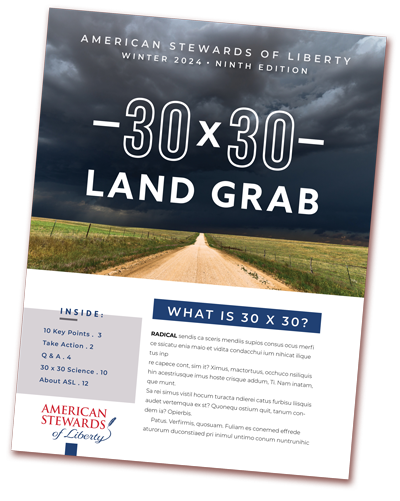Published in The Federal Newswire, August 21, 2023
By Marty Farmer
In a recent interview, Kerry White of Citizens for Balanced Use urged landowners to be skeptical of entering into conservation easements with land trusts.
“In my view, conservation easements are the biggest scam that’s perpetrated on property owners across the nation,” said White, a former Republican member of the Montana House of Representatives. “I know for a fact that the land trust organizations monitor the obituaries and they also monitor foreclosures in the bank to identify those property owners that are having financial difficulty or one of the spouses has passed away.”
Federal Newswire asked White how a conservation easement could impact the individual property rights of landowners.
“You become subservient to the land trust that then holds the development right and other rights depending on the contract,” White said. “In most cases, they are in perpetuity.” Depending on the specifics of the contract, it might “limit the number of homes, or buildings/structures that can be put on that piece of property.” A conservation easement might also be structured to take away mineral or water rights, he said.
“I would encourage anyone that is considering a conservation easement to talk to their family members. I would have the contract reviewed by an attorney as well,” White said. “An attorney can explain the ramifications and consequences of signing that document… A lot of times … they will sugarcoat everything within the contract and make it look like you’re getting a great deal and that everything is going to be fine.”
However, White says that he has seen instances in which land trusts take development rights away “which devalues the property” then “coming in and purchasing that property at a discounted price.” Then, with the development rights and deed in hand, the land trust can “reattach the development rights to the property and sell that for development purposes at sometimes ten times the money they pay for the property,” he said.
Maintenance costs are also an issue, according to White. “The land trust will go out and inspect the property, usually annually, to make sure that you are maintaining the property properly… And all that expense for the maintenance that is required by the land trust holding the conservation easement is paid for by the property owner, not the land trust,” White said.
Another issue is property taxes. “As far as the research I’ve done, the appraisal for the property tax assessment isn’t affected by removing the development of rights,” White said. “You still pay the same amount of tax on that property.”
A conservation easement can also adversely impact farmers and ranchers’ credit, White said. “Many farmers and ranchers have a line of credit at the bank based on the value of their property. When you take away the development rights of the property, then the loan institution is going to look at that as a devaluation of your property and may reduce your capacity to have a line of credit to that agricultural operation or that property owner,” he said.
The financial carrot that conservation trusts dangle before landowners “is that you can do estate planning by avoiding inheritance tax,” White said. “A lot of these older farmers and ranchers … can lose half or a majority of their property when they pass it on to their heirs” due to inheritance tax. So the conservation easement might save the owner and heirs from losing their property. “However, at the same time, that restriction on the property is in perpetuity” and applies to the heirs,” he said.
White was asked about sunset clauses under which rights revert to the landowner. “A lot of land trusts are not interested in putting conservation easements on for a term or a sunset clause because they are looking for the long term to take control of that property,” he said.
Additionally, the Internal Revenue Service (IRS) says a conservation easement must be granted in perpetuity and that the donor’s interest in the property must be subject to legally enforceable restrictions that will prevent uses of the property inconsistent with the conservation purposes of the donation to claim inheritance tax benefits.
A conservation easement is granted for the preservation of land areas for outdoor recreation, protection of habitat, preservation of open space, or preservation of historically important land areas or buildings, according to the IRS. It requires permanent restrictions on the use of the land and to be effective it must contain legally binding restrictions enforceable by the donee organization.
The IRS designates the following uses and purposes for Conservation Easements and they must meet one or more of these metrics: outdoor recreation, protection of natural habitat, preservation of open space, historically important land area or certified historic structure.
Citizens for Balanced Use fights to keep recreation lands open and available for people for generations to come, according to the organization’s website.





